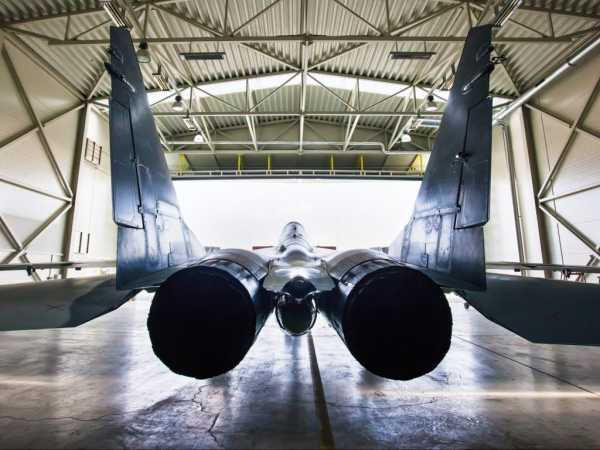
Poland is set to become the first Western nation to supply Ukraine with fighter jets, Polish President Andrzej Duda has confirmed. Speaking in Warsaw on Thursday, Duda said Ukraine would receive an initial batch of four Polish Soviet-era MiG-29 jets “within the next few days.” Further deliveries are expected to follow once additional planes from Poland’s Cold War fleet have undergone servicing.
The Polish decision to send fighter jets to Ukraine is a major watershed moment in international efforts to back the country in its fight against Russian aggression. Over the past year, dozens of nations have sent weapons to Ukraine. This support has helped make it possible for the Ukrainian military to liberate around half of the territory occupied by Russia since February 2022. However, some say Western military aid has been overly cautious, with critics claiming that arms supplies have been carefully calibrated to prevent Ukrainian defeat without being sufficient to secure a decisive victory over Russia.
The debate over international military aid for Ukraine first began in late 2021 as geopolitical tensions mounted amid a Russian troop buildup along the Ukrainian border. Despite widespread alarm over the prospect of a major European war, many countries were extremely reluctant to provide Ukraine with weapons. Some felt arms deliveries could be regarded by the Kremlin as provocative. There were also concerns that any weapons sent to Ukraine would likely fall into Russian hands in the event of a full-scale invasion. As a consequence, initial deliveries were largely limited to the kinds of handheld anti-armor weapons suitable for use in an insurgency against an occupying power.
The remarkable success of the Ukrainian army during the first weeks of the invasion did much to change international attitudes and convince the West that arming Ukraine was anything but futile. A formidable coalition of more than 50 countries soon took shape, with the first in an ongoing series of regular meetings to coordinate military aid efforts taking place at Ramstein Air Base in Germany on April 26, 2022.
Over the past year, the clear trend has been toward providing Ukraine with more and more sophisticated weapons. On the eve of the invasion, Ukraine received anti-tank systems. Following Russia’s spring 2022 defeat in the Battle of Kyiv, Ukraine began receiving artillery and ammunition. This was followed by HIMARS multiple rocket launchers and air defense systems. Most recently, Western leaders agreed to provide Ukraine with dozens of modern battle tanks.
Ukraine has been openly appealing for Western fighter jets since the very first days of the invasion. Indeed, Ukrainian President Volodymyr Zelenskyy made the issue a key focus of his early February three-stop visit to London, Paris, and Brussels. While Western leaders including UK Prime Minister Rishi Sunak and French President Emmanuel Macron have refused to rule out the possibility of planes for Ukraine, they have preferred to postpone any decision on the issue.
Poland’s landmark step may now encourage others to follow suit and send their own jets to Ukraine. Neighboring Slovakia has recently expressed its readiness to hand over the country’s fleet of Soviet-era jets, while many in Kyiv are also hoping to receive significant numbers of modern NATO jets from the US, UK, France, and others. This would fit the established pattern of arms deliveries to Ukraine, which has typically involved one country setting a precedent by committing to deliver a new category of weapon before others do likewise.
Eurasia Center events

Online Event Wed, March 22, 2023 • 4:00 pm ET Freeing Belarus from tyranny: A conversation with Sviatlana Tsikhanouskaya Belarus Civil Society Democratic Transitions Eastern Europe
This is not the first time Poland has led the way in the drive to arm Ukraine. The Poles are among the biggest donors of military equipment and have already provided Ukraine with hundreds of Soviet-era tanks. Crucially, Polish intervention also helped pressure Germany into green-lighting the delivery of Leopard 2 battle tanks to Ukraine in January 2023. This strong support for Ukraine reflects Poland’s own concerns over a resurgent Russia and widespread fears in Warsaw that Moscow could once again pose a threat to Polish security if Putin is not stopped in Ukraine.
Ukraine desperately needs fighter jets in order to bolster its own overstretched air force and boost the chances of success in a much-anticipated spring offensive, which is expected to get underway in the coming few months. Recent commitments to send Ukraine substantial quantities of tanks and armored vehicles should make it possible to punch through Russia’s defensive lines, but more planes are required in order to provide the necessary air cover for an extended offensive. Additional jets could also be deployed to shoot down incoming Russian missiles and boost the country’s air defenses.
Poland’s bold decision to provide Ukraine with fighter jets will send a timely message of Western resolve to the Kremlin. Putin is currently planning for a long war and still believes he can ultimately outlast the West in Ukraine. Each new delay in weapons deliveries serves to reinforce this belief and encourage Putin to continue with his invasion. The only way to convince him otherwise is by dramatically increasing the speed and scope of military aid to Ukraine.
A handful of Polish fighter jets will not prove decisive on the battlefield, of course. However, they could play a very important role in persuading other countries to provide Ukraine with more planes, while also demonstrating to the Kremlin that the West is fully committed to securing Russia’s decisive defeat.
Peter Dickinson is Editor of the Atlantic Council’s UkraineAlert Service.
Source: euractiv.com



